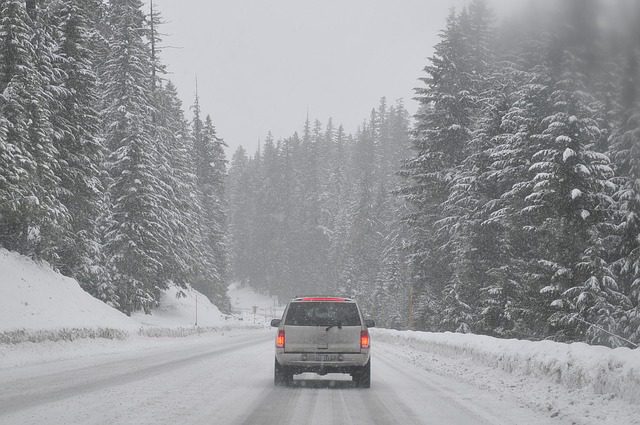Spring is In the Air: Targeting Weather Changes For Your Direct Mail Campaigns

How does the weather affect consumer purchase decisions?
Targeting Weather Changes for Your Direct Mail Campaigns: Right on par with economy fluctuations, surprising as it may seem, weather plays a huge role in impacting consumer purchasing decisions. It affects the emotional state, which in turn drives choices on what to purchase, and dictates how much people are willing to spend. The effects go far beyond the obvious examples like cold beverages selling on hot days, and rain coats when it’s raining.
Weather influences practically every consumer purchase decision. What we eat, our choice of clothing, the type of car we drive and what house we buy, can all be predicted and determined by studying fluctuations in the weather. Understanding this relationship can have a huge benefit for brands and performance marketers. Weather data can be leveraged to market products at precisely the most profitable time, and in the manner which will have the most impact. By studying the weather forecasts for in-home dates, and by choosing a solid direct mail provider who can guarantee fast turnaround, it’s possible to gain a great competitive advantage.
Weather affects consumers on 3 levels — method of purchasing, mood, and choice of products:
..
The Effect of Weather on Method of Purchasing
On the most basic level, weather affects the channels consumers use to make their purchases. For example; during warm sunny days, traditional brick and mortar shops often enjoy more in-store foot traffic, whereas periods of inclement weather tend to increase traffic to online domains. However, much also depends on seasonality, industry and the type of product(s) offered. Studies have found that on wet or cold days there was an average 12% increase in web traffic for retailers in home & furniture, wholesale, and clothing industries as compared to traffic on warm sunny days. However, oddly enough, there was no real significant difference for “big box” type retailers. Because weather driven demand can really vary with the type of industry, it is crucial that advertisers have insights on how various weather conditions affect product sales and methods of purchase.
The Effect of Weather on the Mood of the Consumer
 Another way in which weather influences consumer behavior patterns is by its effect on mood. Temperature, humidity, air pressure, snow — and especially sunlight can have a huge impact on a person’s frame of mind, which extends into their spending. It’s been proven time and again that exposure to sunlight increases a sense of well-being which in turn dramatically increases levels of consumption as well as the amount spent per item. Data from one study concluded that consumers would willingly pay up to 37% more for green tea and 56% more for a membership to a gym after being exposed to sunlight. Seasoned retailers are quite savvy to the sunlight purchasing power effect, and use bright halogen lighting to mimic sunlight illumination in their stores. The mind frame of the consumer can also be determined by seasonal weather events, for example if there is snow in late October, this can get consumers into the Christmas spirit early and subsequently boost pre-Christmas sales revenue.
Another way in which weather influences consumer behavior patterns is by its effect on mood. Temperature, humidity, air pressure, snow — and especially sunlight can have a huge impact on a person’s frame of mind, which extends into their spending. It’s been proven time and again that exposure to sunlight increases a sense of well-being which in turn dramatically increases levels of consumption as well as the amount spent per item. Data from one study concluded that consumers would willingly pay up to 37% more for green tea and 56% more for a membership to a gym after being exposed to sunlight. Seasoned retailers are quite savvy to the sunlight purchasing power effect, and use bright halogen lighting to mimic sunlight illumination in their stores. The mind frame of the consumer can also be determined by seasonal weather events, for example if there is snow in late October, this can get consumers into the Christmas spirit early and subsequently boost pre-Christmas sales revenue.
The Effect of Weather on Consumer Product Demand
In addition to having an impact on mood, likelihood to spend, and preferred channels of purchase, weather is a major driver of product demand. The food and beverage, pharmaceutical, and fashion industries are most heavily affected by this consumer demand phenomenon. Because of data compiled year after year, decade after decade, weather-driven demand can be predicted with precise accuracy due to identifiable trigger points. For instance, if temperatures in Autumn drop just 1 degree from 64.4°F in the Northern US, this can lead to a huge increase in sales of soup, hot cereals, and lip care products. And in the UK, if temperatures raise over 64°F, supermarkets know that there will be a 22% increase in carbonated drinks, 20% increase in juices, and 90% increase in outdoor furniture. Supermarkets utilize weather intelligence daily to guide stock management and advertising decisions — much of which are based on live weather data as a way of targeting their advertising campaigns.
It’s not just groceries, small retail and ‘low-involvement’ products that are affected by the weather. Weather can actually influence purchase decisions on big ticket, high-involvement items like cars, houses, vacation bookings, high-dollar fashion apparel, and even insurance. An example of how this works is; a weather-driven campaign for a 4 wheel drive vehicle model which only showed during snowy weather, managed to achieve especially high click through rates, and generate increased revenue as a result. Vacation rentals and travel bookings have also been proven as unquestionably linked to periods of inclement local weather.
..
 vs.
vs. 
In Conclusion
Weather has an astounding effect on consumer psychology and purchasing behavior. By cross-referencing point-of-sale data sets with historical weather information, brands are able to gain a thorough understanding of these relationships. Armed with this weather insight, marketers can strategically implement a weather-responsive marketing campaign to deliver highly targeted promotions that produce a high rate of response.














